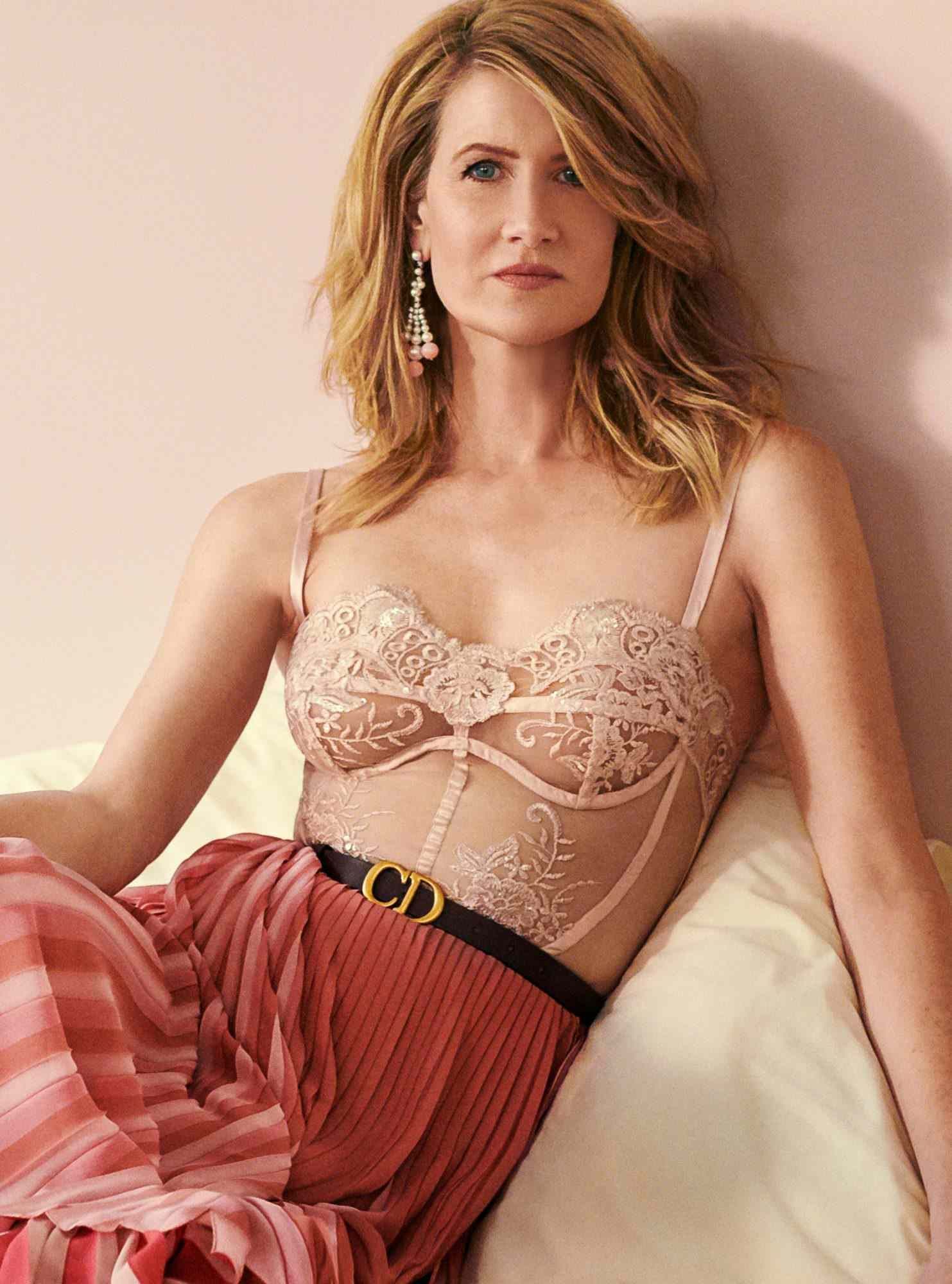Why Laura Dern Is Such a Gay Icon
Dishing Out Dern: Our Long-Haired Gay Icon
What’s the magic in Laura Dern that makes her the perfect concoction for a gay icon? And why is it that our queer hearts beat so uncontrollably for her?
We're going to demystify this enchanting allure through the lens of our witty, and somewhat geeky, academic theorists who like to split open gay culture like a Thanksgiving turkey.
Hey, I See Myself in Her: Identification and Resilience Theory
Diana Fuss had a point when she delved into the psychological process of identification. Let's be honest, Laura Dern's characters have been through some shit (Hello, 'Marriage Story'?).
These narratives of resilience echo the lived experiences of many gay men who've had to face adversity head-on. Dern's roles provide that mirror in which they see their own struggle and, more importantly, their strength.
Divinely Dern: Divine Femininity and Androgyny Theory
Let's not forget about Judith Butler's thoughts on gender performativity. Butler suggests that gender isn't innate but performed. Now take Laura Dern in ‘Jurassic Park’, with her khaki shorts and her take-no-prisoners attitude.
She's embodying a divine mix of femininity and androgyny, performing a gender role that flips heteronormative stereotypes on their head. For the gay community, Dern’s characters offer a space to explore gender performances beyond society's expectations.
Breaking Boundaries, Dern Style: Transgressive Theory
Busting through societal norms like a bull in a china shop, Dern has been unapologetically transgressive. Remember when she locked lips with Ellen DeGeneres on 'Ellen,' effectively ushering her out of the closet and into the annals of queer history?
Jack Halberstam would have a field day with this, seeing as transgression is his whole shtick. As marginalized individuals, gay men resonate with Dern's bold defiance of societal norms. It's like she's saying, "I see your expectations and raise you a big middle finger."
So, next time you see Laura Dern delivering a dramatic monologue or going rogue on societal norms, remember, it's not just her acting chops that have the gay community enraptured. It's the camp, the resilience, the gender fluidity, and the transgression. Academic theories, who knew you could be this fun? Now, keep calm and carry on with your Dern fascination. It's more common (and justified) than you think.

More than a Mirror Image?
Who's that lurking in the Dern reflection, and why does it look suspiciously like us? Can Laura Dern help us understand each other better? And, dare we ask, does she help us form those golden threads of connection in the gay community?
You know that thing where you look at a mirror and go, "Hey, that's me"? That's Jacques Lacan's Mirror Stage Theory, simplified to its bare bones. Lacan believes that our sense of self forms when we recognize ourselves in the mirror as children.
As adults, gay men may recognize bits of their own identities or struggles in Laura Dern's roles. There's something deeply relatable about her raw, emotional portrayals, and it's like looking into a mirror of the soul. It's this mirror effect that solidifies Dern's status as a gay icon.
Band of Brothers: Homosocial Desire Theory
Let's move on to Eve Kosofsky Sedgwick’s Homosocial Desire Theory. Sedgwick says that strong, non-sexual bonds often form among people of the same sex, particularly in a heteronormative society.
Enter Laura Dern, the catalyst for camaraderie in the gay community. Whether it's drooling over her latest film or gushing about her Oscars look, she's a conversation starter, a bonding agent. Gay men gather together, celebrating her and, in turn, each other. Dern is more than just an icon, she’s a community builder.
Dern: Representing the Marginalized
Finally, we take a dive into Stuart Hall's Marginalized Representation Theory. Hall posits that marginalized groups often resonate with figures who've also been sidelined.
Laura Dern has never shied away from playing characters on the fringes, characters grappling with complex emotions and experiences. Remember her poignant performance as a sexual abuse survivor in ‘The Tale’?
These performances strike a chord with gay men, who often feel marginalized themselves. Dern's dedication to representing the underrepresented is a big checkmark in her gay icon dossier.
There you have it, folks. Laura Dern is more than just an Oscar-winning actress.
She’s a mirror, a community builder, a champion for the marginalized. Academic theories, in all their jargon-filled glory, help us understand why we're drawn to her, why we see her as a gay icon. It's not just about her talent (although that's definitely a factor). It's about the connection, the representation, and the camaraderie.
So next time you're watching a Laura Dern film, remember, you're not just watching an actress. You're looking into a mirror, you're participating in a community, and you're engaging with a symbol of representation.
Gay Icons of the 1930s and 1940s
Gay Icons of the 1950s and 1960s
Gay Icons of the 1970s and 1980s
Gay Icons of the 1990s
Gay Icons of the 2000s
Fictional Gay Icons
Wonder Woman
Julia Sugarbaker (Designing Women)
Buffy Summers (Buffy the Vampire Slayer)
Blanche Devereaux (Golden Girls)
Patsy Stone (Absolutely Fabulous)
Miranda Priestly (Devil Wears Prada)
Karen Walker (Will & Grace) (have pics)
Samantha Jones (Sex and the City)
Ursula the Sea Witch (The Little Mermaid)










